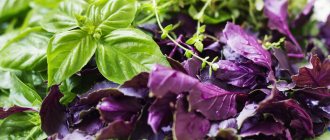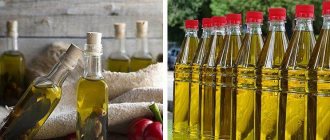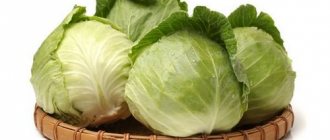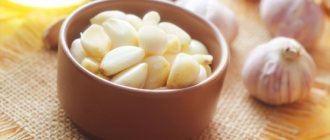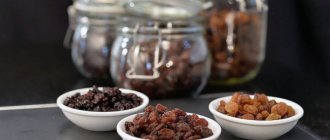Proper storage of Chinese tea is the key to preserving its rich taste, unique aroma and quality for a long time. What kind of dishes or containers should you use to store tea and what is the best way to store it? More on this later.
Tea is on the first line of the Russian and international rankings of the most frequently consumed drinks. It has a large amount of antioxidants to combat stress and prolong youth. In addition, it is simply a pleasant drink, which Russians drink even more often than the British.
To retain its taste, aroma and benefits, you need to learn how to properly store tea at home. Dried tea leaves absorb moisture from the air and lose their original characteristics. As a result, the entire product spoils. Therefore, it is so important to know all the nuances: temperature conditions, how long tea can be stored and what storage container to choose.
How to store tea correctly: the basics
First of all, we will talk about storage conditions: how long to store tea, at what temperature and other important information. The shelf life of Chinese tea in your home will depend on these nuances.
Minimum humidity
The tea drink, regardless of the type, should be kept in a room with a humidity level not exceeding 30-40%. When opening a jar or other container, the leaves absorb water. Over time, they deteriorate and smell unpleasant.
You can organize the storage of tea in small portions in small containers. Package the product packaging into tubes consisting of several compartments. Then each batch will have less contact with air.
Different types of tea react to humidity in their own way. Black and pressed leaves absorb moisture more. Green and loose varieties are least susceptible to moisture.
Expensive and high-quality varieties do not deteriorate relatively longer in humidity. The more complete the leaf surface, the less moisture it contains. For example, black tea contains up to 7% moisture, and green tea contains 5%. When the humidity reaches 8%, the drink becomes more sour and begins to lose its taste and aroma. For this reason, it is worth choosing more carefully in which container you will store your tea.
Darkness
Sunlight is a powerful oxidizing agent for seagulls. The sun destroys the leaves, deteriorates their taste and beneficial qualities. In addition, it affects their color. If they are exposed to light for a long time, they begin to fade. If you do not have dark places to store tea leaves at home or in an establishment, use dense containers that are not capable of transmitting sunlight.
Temperature
Tea storage, like coffee storage, should ideally be organized at a temperature of 0 to 18 degrees. When creating a warmer room, it is possible to continue fermenting green tea bags and regular black tea. As a result, white or green will quickly deteriorate. This is not a big deal if you brew the drink every day or more often. Because you will use it before it becomes unusable.
Choose a tea storage box that is located far from the stove, oven, radiator and other heat sources.
It is worth pointing out that thanks to the cool temperature, the shelf life of green tea and others will be extended. Correctly selected temperature for storing tea can inhibit various pathogenic factors in the development of microorganisms.
How long and how much loose leaf tea can be stored in bags in company packaging or other containers in the kitchen will depend on other factors. Manufacturers usually write storage conditions on the original packaging.
Interestingly, the best containers for loose leaf tea in the kitchen are tea storage drawers, and the best place is the refrigerator due to temperature and lack of light. This answers the popular question of whether tea can be stored in the refrigerator.
Foreign odors
The refrigerator is a great place to store tea and coffee. However, there is a BUT. There are a lot of flavors in this place. The leaves will absorb them if you use a tea jar with a loose lid.
When storing tea in the refrigerator, choose jars with a sealed silicone seal between the neck and lid. It will ensure the safety of the leaves and prevent unnecessary odors from reaching them.
Fragrances are produced not only for food products, but also for plastic with spices, perfumes and household chemicals. If you decide to use containers that have contained other products, make sure they are clean. Wash them thoroughly in hot water.
Packaging tightness
Tightness is needed to retain beneficial and flavorful properties and protect from the external environment. First of all, it is necessary when storing tea with strong-smelling products, such as spices. Thanks to proper packaging, you can extend the shelf life of green tea and any other tea.
Factors affecting the preservation of tea
There can be many external factors; we will list only those that have the greatest impact on tea storage:
- strong odors;
- sunlight;
- air temperature;
- contact with oxygen;
- air humidity.
Air humidity
Humidity directly affects the preservation of tea. Large fluctuations in humidity and high humidity can cause the tea to become unusable. Dry tea leaves contain a very small percentage of moisture, but it is a hygroscopic product and can easily absorb moisture from the air. If air humidity is greater than the moisture content of a dry leaf, then the leaves are filled with moisture from the air. At high temperatures and high humidity, mold and microorganisms quickly develop in tea.
You may be interested in: Choleretic tea, how to prevent bile stagnation
Sun exposure
Sunlight (diffused or direct) accelerates the oxidation process in tea, activates enzymes, and destroys the pigments of tea leaves. Dry leaves quickly turn yellow, the color of the infusion becomes yellowish in green tea. The aroma almost completely disappears.
Temperature
This is another factor affecting the safety of tea. The cause of spoilage of any organic product is bacteria, yeast and mold. These groups of microorganisms can cause spoilage of any tea. It is necessary to reduce possible consequences as much as possible. How to do it? It is enough to remember the laws of physics. At low temperatures, the vital processes of microorganisms proceed slowly. This is why most foods are stored in the freezer or refrigerator to increase shelf life. This also applies to tea. At high temperatures, tea spoils faster.
Strong odors
Tea leaves perfectly absorb surrounding odors. It is forbidden to store tea in the same cupboard with spices and seasonings. The taste of tea will be irretrievably lost if it is saturated with foreign odors.
Contact with oxygen
Oxygen is involved in the oxidation process, and tea has already gone through the oxidation process at the time of production. It doesn't need excess oxidation. Unfermented tea contains many antioxidants that affect human beauty and health. If tea has been in contact with oxygen for a long time, polyphenols begin to break down and the healing properties are lost.
Storage conditions for different types of tea
There are many varieties of tea - black, green, red, yellow, white, pu-erh, oolong, sencha, herbal and others. Many years of experience of producers and ordinary people suggests that the basic storage rules are no different for different varieties:
- Cool room,
- Low humidity
- Sealed packaging,
- No direct sunlight,
- No pungent odors.
When choosing where to store tea at home in the kitchen, look for a place that meets these conditions. Most likely, it will be a closed box away from the stove and heating devices, specially reserved for tea and coffee.
Rules for storing tea at home
Taking into account all the above factors, we can formulate the following rules that will help keep tea in perfect condition.
Where to store tea? The tea should be stored in a cool, dark place in an airtight container. It is better if constant humidity and air temperature are maintained there. If you store tea in such conditions for a whole year, its quality will definitely not change. Only a professional tea tester can determine the age of such tea.
Temperature is an important factor to keep in mind. You can store tea in the fruit section of the refrigerator, where the temperature is 1-2°C. But freezing tea is not recommended. When storing tea in the refrigerator, sealing it is mandatory, since the humidity there is constantly high. You can package tea at home in small bags designed for a certain number of tea parties and seal it with a household solder.
You may be interested in: Tea with honey will help children and adults for coughs
These recommendations largely apply to green teas and oolongs, but they are also suitable for storing black tea.
Can tea be stored in the refrigerator and freezer?
Storing tea in the refrigerator, on the one hand, is suitable for temperature conditions. But most importantly, the humidity in the refrigerator is much higher than necessary. Therefore, storing tea and tea leaves in the refrigerator is not recommended.
As for storing in the freezer, it is more suitable for long-term storage of herbs. By collecting fresh herbs in the summer and freezing them, you can pamper yourself with a bright and unusual taste all year round. You can do the same with berries, which will further take your tea drinking to a new level.
What is the shelf life of tea?
How long tea can be stored is determined by the manufacturer on the packaging. This is especially true for tea bags and pyramids. But if you still have the packaging from the sheet type, then also pay attention to this information on it.
Cut out the expiration date for Chinese tea from the original packaging before transferring the tea to a jar or other container. Stick it on the jar or put it inside. This way you will always know how long you can store your type of tea.
After the expiration date, the tea can be consumed, but it will no longer please you with its bright taste. Loose tea can be stored for the following period:
- Black tea up to one and a half years (1.5 years),
- Green tea up to six months (0.5 years),
- Oolong up to one year (1 year),
- Herbal tea up to one and a half years (1.5 years),
- Pu'er up to a decade (10 years).
The average shelf life of loose leaf tea of any variety is 1 year.
Jars and utensils for storing tea at home
Choosing a suitable container will be the key to effective storage of tea in bags or loose leaves. What is important to pay attention to:
- Size,
- Light transmittance
- tightness,
- Material.
When answering the question in which container is best to store tea, it is worth pointing out that dishes made of porcelain, ceramics, glass and tin tubes are suitable for this. Such containers will provide excellent storage conditions, which will help the leaves of black, green, white, red and any other tea variety retain their properties.
The most suitable tableware options for storing tea are ceramic jars and tin cans. They do not allow light to pass through, and usually have a good seal - what is needed for proper storage.
In specialized stores you will find special porcelain teapots for storing tea. They already have all the necessary qualities for such dishes. The main thing is that they have a cool design in ethnic or modern style.
If you'll be using a drawer for storage rather than open shelves, glass jars will also work. Make sure that their lid fits tightly to the jar itself and does not let air through. When choosing specialized boxes, also pay attention to their tightness. Unlike glass jars, it can also be stored on open kitchen shelves or in the living room.
Avoid fabric, paper and cardboard boxes and containers. Typically, they are the second packaging in which manufacturers ship their products. In addition to it, you will definitely find a sealed foil package inside. After opening it, pour the tea into a more suitable container.
Cardboard box for black tea, plastic containers for Chinese tea, paper, cloth and cardboard for loose tea are poor options. You need to carefully choose a storage location for them. But this option may be suitable if you plan to consume the drink within a month.
Is it possible to store tea in a tin?
You can store tea in a tin can, but provided that it is sufficiently airtight. In addition, it is easier to select and buy such a jar than other types of storage containers.
Is it possible to store tea in a glass jar?
Storing tea in a glass jar is possible only if two conditions are met:
- Firstly, the lid fits tightly to the vessel, which creates a tight seal.
- Secondly, you store the jar itself in a dark box, out of direct sunlight.
How to store herbs for tea
Orange peels for tea, herbs picked in summer and other additives are also recommended to be stored in airtight containers. Humidity and lack of sunlight are also important for them. But if you are a hobbyist and use them very often, then don’t worry, they won’t deteriorate even in cardboard boxes.
Selection and preparation for storage
When purchasing tea, you need to look at the conditions in which it is located and how it is packaged.
- Before purchasing this product, you should carefully read all the information on the packaging. Find out at what time the leaves were collected (not packaged, but rather collected). A lot of time could have passed between these dates. This is an important date, since it is not known under what conditions and where this product was stored before packaging.
- tea that has been stored near various substances or products with a strong odor , especially if it is in a paper bag.
- Tea leaves in a transparent glass jar are of no interest to true connoisseurs. Tea leaves that have been exposed to light for some time lose most of their taste.
- It is advisable to collect the product by weight not from general containers, but packaged in foil bags.
And if you store coffee next to tea leaves, then you are making a huge mistake! We wrote about how and where to store coffee correctly in this article.
Preparation
Expensive elite varieties can acquire qualities worse than those of the lowest-grade loose varieties if they are not stored correctly, although they are much more expensive.
- After returning from the store, it is advisable to pour the tea leaves into a container of suitable size. After which it is hermetically sealed and placed in the vegetable compartment of the refrigerator.
- You can also store tea in cabinets and pencil cases, in the kitchen, with the exception of green and oolong. It is placed in a place away from heat sources, where spices and household chemicals are not stored.
- Large volumes of tea leaves should not be kept in one container, and before storing tea in the refrigerator, it should be packaged in small portions.
- Every time a container is opened, some oxygen enters it, causing the taste of the drink to deteriorate. That is why the tea leaves need to be stored in small portions.
How to handle tea correctly
Such an exquisite drink requires an appropriate attitude. First of all, do not apply tea with your hands. To put the tea leaves into the teapot, use a spoon and or a wooden spatula. This experience will create a special mood for your tea ceremony.
Also, you should not compact the tea leaves. If you transfer them to storage containers and force them to the bottom, this will cause damage and quickly dissipate the aroma. Loose tea, in this case, will change the taste, regardless of how long you plan to store the tea leaves, in a glass jar or other container and at what temperature.
When purchasing, pay attention to the assembly date and shelf life of the tea indicated by the manufacturer. Obviously, fresh tea with a long date will last much longer.
Recommendations for choosing a location
Flour should be stored in a dry place, where there are no temperature fluctuations and optimal parameters are maintained. Pantries, built-in pencil cases or shelves in kitchen cabinets, and mezzanines are most suitable for this purpose.
We recommend: How long can freshly squeezed juice be stored: ways to preserve vitamins
Pantry
A cool pantry, out of sunlight, is ideal for storing flour. The product is placed on shelves in canvas bags and glass jars.
Refrigerator shelf
Storing it on the refrigerator shelf increases the shelf life of flour. It is poured into glass or plastic containers and tightly closed with lids. The disadvantage is that it is impossible to place a large number of containers in the refrigerator.
Balcony or loggia
In winter, during frosts, flour can be stored in containers on the loggia or balcony. The option is not considered the most successful, since during such storage the temperature differences are large, there is no access to air and the product “does not breathe.”
Kitchen pencil case
In small kitchens, where there is always not enough space, a convenient way to arrange containers with flour in cabinets. Product packages can be folded compactly. Thanks to the flat lids of the containers, they are placed on top of each other and significantly save space.
Bottom shelves of kitchen cabinets
The temperature on the lower shelves of kitchen cabinets is slightly lower than on the upper ones. This is especially noticeable when the cabinet is located next to the hob. Therefore, the lower shelves are more suitable for bulk products.
Mistakes of storing tea in the kitchen
The shelf life is sharply reduced if you use unsealed glass jars or plastic containers for storing tea, which are placed on open kitchen shelves. Such containers are subject to two negative influences at once:
- Exposure to sunlight
- Penetration of kitchen odors into the jar.
Another mistake is using a tea box to store tea. The fact is that you risk that the leaves will become saturated with the smell of paint, varnish or wood. Its use is only possible if you place sealed containers inside.
If you do not want to create your own signature tea mix, then keep each variety in its own container, avoiding mixing them.
What to do if the storage conditions for tea were violated and it spoiled?
If the main conditions of how to store Chinese tea or how to store herbs for tea have been violated, you should use it differently. For example, it can be a good flavoring or deodorizing agent. However, you should not allow it to spoil and think in advance about what to store loose leaf tea in and how long it can be stored.
